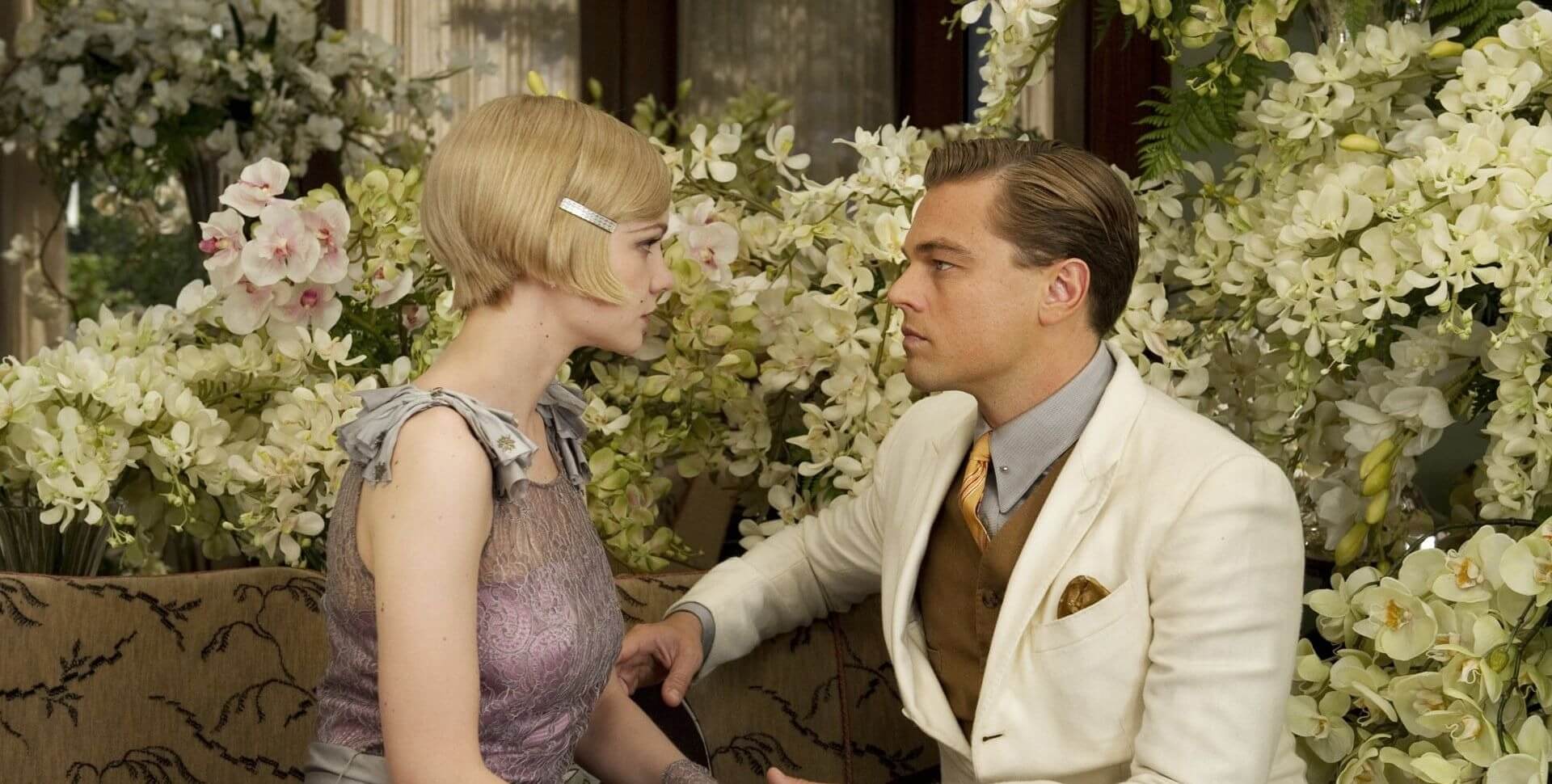The Great Gatsby [2013]: Baz Luhrmann’s movie adaptation of F. Scott Fitzgerald’s 1925 novel, The Great Gatsby, was held in much anticipation among the likes of literature junkies, DiCaprio fanatics, and box office skeptics. With a film that proceeds a handful of remakes decades apart, this 2013 version had critics doubting Luhrmann’s rendition measurable to the 1974 Gatsby movie starring Robert Redford and Mia Farrow–which there might, in perspective, have been a good reason to do so. The Great Gatsby tells the story of the mysterious Jay Gatsby (Leonardo DiCaprio) as he attempts to rekindle the flame of his lost love, Daisy Buchanan (Carey Mulligan), set within the backdrop of the roaring 1920’s and narrated by his neighbor, Nick Carraway (Tobey Maguire). Luhrmann is no stranger to the melodramatic and theatrical, his claim to fame being the bedazzled, marquee-lit Red Curtain Trilogy (Strictly Ballroom, Romeo + Juliet, and Moulin Rouge), and it is no surprise that he incorporates his colorful, confetti-sprinkled touch on this classic novel-turned-film.
Gilded Butterflies: Elaborate set designs, costumes, and filming techniques create an aesthetic that is visually pleasing to an audience with a short attention span, however, some of these gaudy additions completely defeat the purpose of the story itself. The first half of the film neglects any character development or plot progression and serves as an opportunity to include as much unnecessary camera effects, unbearably long dance numbers/party scenes, and flashy CGI as possible. Where’s the heart? Where’s the very soul that made The Great Gatsby an American classic in the first place? It’s buried beneath a mess of feathers, sparkles, and fizzy remnants of bar fights. Yes, it was a time of drinking and partying, but you don’t need to stretch it out to about three different scenes featuring 5+ minutes-worth of senseless party shots, some not even featuring any of the main characters themselves. A story needs substance–not just the alcoholic variety.
Speeding Past the Golden Age: The Great Gatsby’s soundtrack has been a topic of much debate regarding the use of contemporary music in today’s hip-hop/rap charts. Luhrmann has mentioned in previous interviews that the inclusion of rap music was to mirror the impact jazz music had during the 1920s, and how rap/hip-hop evokes the same outburst and vivacity in the present era as jazz once did. With that being said, why not just have jazz music? Hearing Kanye West and Beyoncé play within the scenes of the film makes it seem out of
Better on Paper: All the bookish cinema-goers will be glad to know passages from the novel are voiced verbatim by Tobey Maguire in Peter Parker-esque voice-overs harking back to the Spider-Man Trilogy. The symbolic green light by Daisy’s house and the optometrist billboard in the Valley of the Ashes also make prominent appearances, but their constant emphasis leaves viewers who have not read the novel a little confused about their significance and why the camera keeps zooming in on a sign with a pair of eyeglasses on it. Overall, Baz Luhrmann’s The Great Gatsby abandoned all the redeemable qualities of Fitzgerald’s original, character-driven story, and focused more on the secondary visual aspects instead. Although attempting to stay close to the book’s premise, the screen adaptation just leaves the audience members disengaged. Sure, the pretty lights and colors may temporarily awe the easily-pleased, but in the long-run, The Great Gatsby will not live up to its former hype.
In reference to Lana Del Rey’s haunting ballad, “Will you still love me when I’m no longer young and beautiful?” And the answer is: No. No, we will not.

Watch The Great Gatsby on Amazon or iTunes

